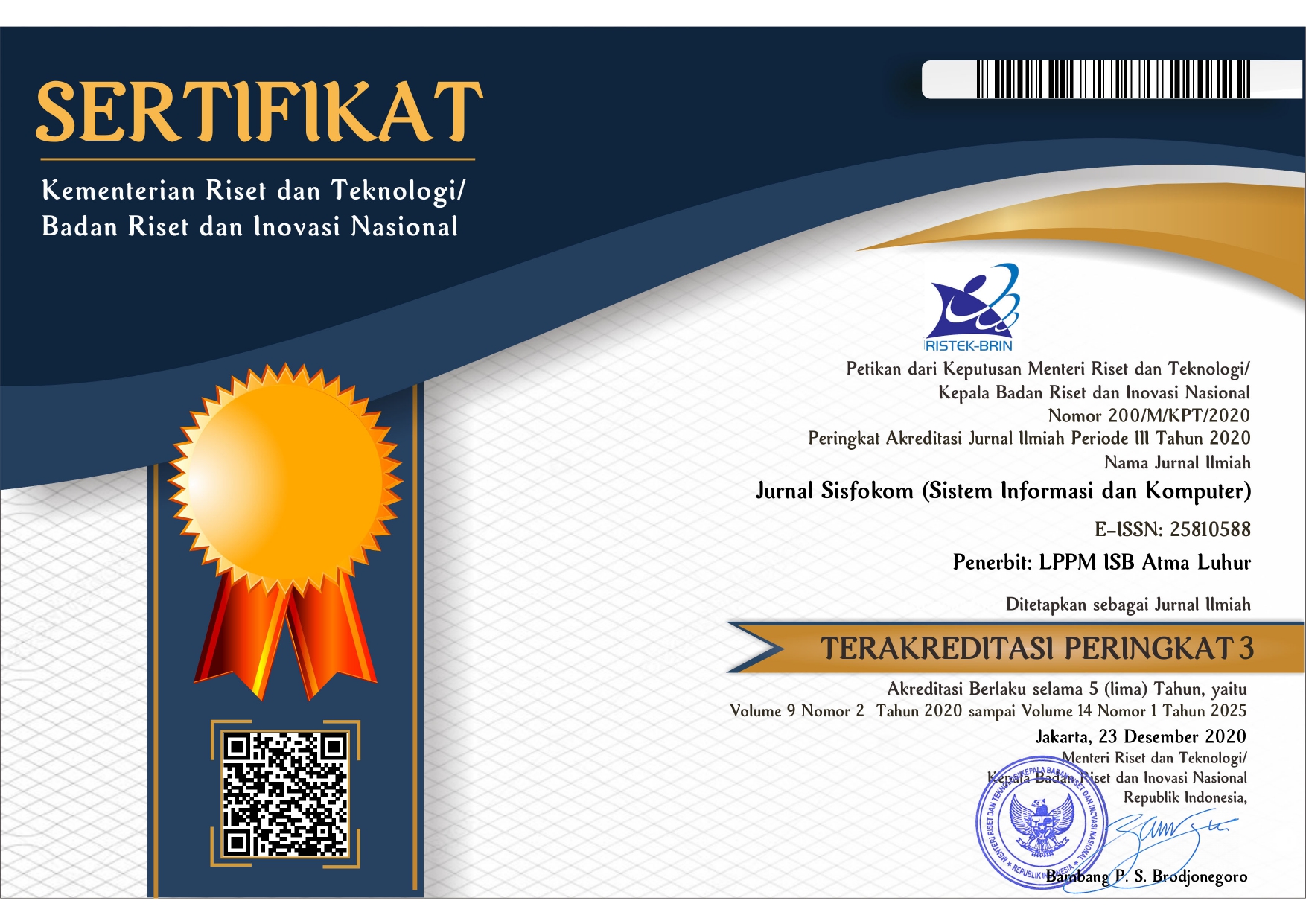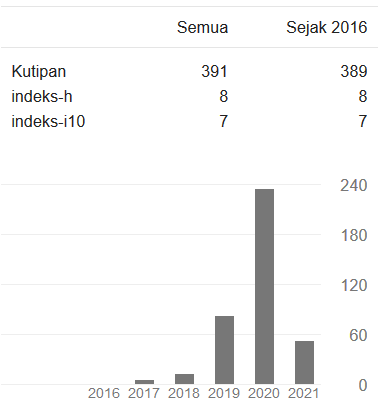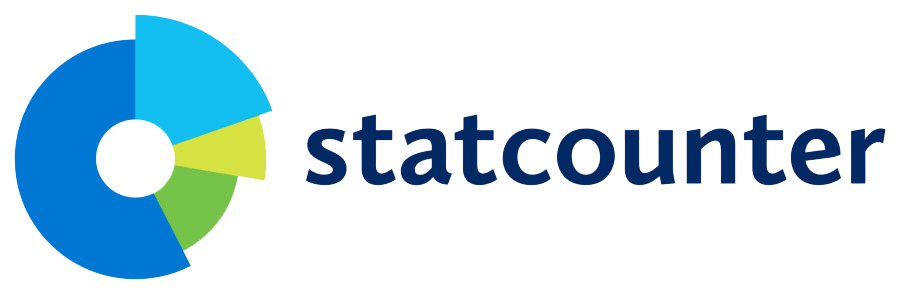Prediction of SDG 6.2 Achievement in Indonesia Using Double Exponential Smoothing
DOI:
https://doi.org/10.32736/sisfokom.v14i3.2411Keywords:
Sanitation Access, Open Defecation, Double Exponential Smoothing, Spearman Correlation, SDGs 6.2 IndonesiaAbstract
This research aims to forecast Indonesia’s progress in achieving Sustainable Development Goal (SDG) 6.2, which targets 100% access to adequate sanitation and elimination of open defecation (OD) by 2030. The Double Exponential Smoothing (DES) method was used on provincial time series data from 2013–2024 (sanitation) and 2020–2024 (OD), with performance evaluated using Mean Absolute Percentage Error (MAPE). Results showed consistently high forecasting accuracy, with DKI Jakarta (0.99%), South Sulawesi (1.87%), and DI Yogyakarta (2.21%) among the most accurate for sanitation, and Maluku (2.79%), Papua (3.03%), and Gorontalo (4.49%) for OD. Spearman correlation analysis revealed a strong national negative correlation (r = –0.991, p < 0.001) between sanitation access and OD. However, provinces like DKI Jakarta (+0.36) and DI Yogyakarta (+0.86) showed positive anomalies, indicating behavioral gaps despite infrastructure growth. These findings clearly highlight the importance of integrating behavioral interventions and localized strategies to effectively accelerate progress toward SDG 6.2.References
[1] A. Mukhlishin, m. Ahmad baihaqi, h. Abdillah, i. A. Muharommah, and m. B. Yusuf, “jurnal informatika dan teknik elektro peramalan 7 target sdgs (sustainable development goals) 2030 dalam rangka mewujudkan masyarakat indonesia maju,” 2023. [online]. Available: https://ejournal.upm.ac.id/index.php/intro
[2] N. K. Arora and i. Mishra, “sustainable development goal 6: global water security,” environmental sustainability, vol. 5, no. 3, pp. 271–275, sep. 2022, doi: 10.1007/s42398-022-00246-5.
[3] S. N. Maulida, s. Nasution, d. Adiyaksa, u. Syarif, h. Jakarta, and b. Kabupaten bogor, “implementation of the sixth sustainable development goal (sdgs) in providing access to clean water and safe sanitation in bogor regency,” bina: jurnal pembangunan daerah, 2023.
[4] F. Suryani jamin, e. Sugito, s. Adhi pramono, a. Aristanto, and e. Immamah, “pelatihan edukasi peningkatan kesadaran sanitasi lingkungan dalam menghadapi peningkatan pemanasan global dunia,” jurnal pengabdian kepada masyarakat nusantara, vol. 5, no. 1, pp. 1500–1508, mar. 2024, doi: 10.55338/jpkmn. v5i1.3010.
[5] J. Bastira ginting, m. Siagian, and t. Suci, “faktor-faktor yang berhubungan dengan buang air besar sembarangan (babs) di desa kampung dalam kabupaten labuhan batu tahun 2023,” jurnal maternitas kebidanan, vol. 9, no. 1, 2024.
[6] D. A. Kusumaningtiar, g. Vionalita, p. D. Samilaksita, n. W. Sangadji, and t. R. Anggara, “optimalisasi keberlanjutan water, sanitation and hygiene in school (wins) dalam meningkatkan kesehatan dan lingkungan yang bersih di sekolah,” i-com: indonesian community journal, vol. 4, no. 1, pp. 387–395, mar. 2024, doi: 10.33379/icom. v4i1.4045.
[7] H. Pengetahuan dan sikap dengan perilaku buang air besar sembarangan di desa cipadang kecamatan gedong tataan et al., “the relationship between knowledge and attitudes and open defecation behavior (babs) in cipadang village district gedong tataan,” 2024.
[8] J. Kesehatan masyarakat et al., “open defecation free melalui program sanitasi total berbasis masyarakat di puskesmas merauke,” dec. 2024.
[9] W. Ode nurhidayati, l. M. Zainul, and p. Studi keselamatan dan kesehatan kerja universitas balikpapan, “faktor-faktor yang berhubungan dengan perilaku buang air besar sembarangan (babs) pada masyarakat di desa wakeakea kabupaten buton tengah factors associated with open defecation behavior in communities in wakeakea village, central buton regency,” miracle journal of public health (mjph), vol. 6, no. 1, 2023, doi: 10.36566/mjph/vol6.iss1/312.
[10] F. P. Gurning et al., “faktor yang mempengaruhi perilaku buang air besar sembarangan (babs) di desa pulau sembilan kec. Pangkalan susu kab. Langkat,” an-nadaa jurnal kesehatan masyarakat, vol. 11, no. 2, p. 215, dec. 2024, doi: 10.31602/ann. v11i2.13602.
[11] P. Kesdam and v. I. Banjarmasin, “jurnal promotif preventif faktor budaya terhadap kesadaran masyarakat dalam mengatasi masalah buang air besar sembarangan: literature review cultural factors on public awareness in addressing open defecation issues: a literature review indrayadi, yuhansyah, hastin atas asih,” 2024. [online]. Available: http://journal.unpacti.ac.id/index.php/jpp
[12] A. S. Suryani, p. Penelitian, b. Keahlian, d. Ri, j. Jenderal, and g. Subroto, “pembangunan air bersih dan sanitasi saat pandemi covid-19 clean water and sanitation development during the covid-19 pandemic,” jurnal masalah-masalah sosial |, vol. 11, no. 2, pp. 2614–5863, 2020, doi: 10.22212/aspirasi. v11i2.1757.
[13] R Ardian, a. Putra, h. Z. Zahro’, and d. Rudhistiar, “penerapan metode double exponential smoothing untuk peramalan penjualan unit mobil,” 2023.
[14] F. Ahmad, “penentuan metode peramalan pada produksi part new granada bowl st di pt.x,” jisi: jurnal integrasi sistem industri, vol. 7, no. 1, p. 31, May 2020, doi: 10.24853/jisi.7.1.31-39.
[15] Y. Utami, d. Vinsensia, and e. Panggabean, “forecasting exponential smoothing untuk menentukan jumlah produksi,” jurnal ilmu komputer dan sistem informasi (jikomsi v, vol. 7, no. 1, pp. 154–160, 2024.
Downloads
Published
Issue
Section
License
Copyright (c) 2025 Nazwa Nabila, Adhitia Erfina, Cecep Warman

This work is licensed under a Creative Commons Attribution 4.0 International License.
The copyright of the article that accepted for publication shall be assigned to Jurnal Sisfokom (Sistem Informasi dan Komputer) and LPPM ISB Atma Luhur as the publisher of the journal. Copyright includes the right to reproduce and deliver the article in all form and media, including reprints, photographs, microfilms, and any other similar reproductions, as well as translations.
Jurnal Sisfokom (Sistem Informasi dan Komputer), LPPM ISB Atma Luhur, and the Editors make every effort to ensure that no wrong or misleading data, opinions or statements be published in the journal. In any way, the contents of the articles and advertisements published in Jurnal Sisfokom (Sistem Informasi dan Komputer) are the sole and exclusive responsibility of their respective authors.
Jurnal Sisfokom (Sistem Informasi dan Komputer) has full publishing rights to the published articles. Authors are allowed to distribute articles that have been published by sharing the link or DOI of the article. Authors are allowed to use their articles for legal purposes deemed necessary without the written permission of the journal with the initial publication notification from the Jurnal Sisfokom (Sistem Informasi dan Komputer).
The Copyright Transfer Form can be downloaded [Copyright Transfer Form Jurnal Sisfokom (Sistem Informasi dan Komputer).
This agreement is to be signed by at least one of the authors who have obtained the assent of the co-author(s). After submission of this agreement signed by the corresponding author, changes of authorship or in the order of the authors listed will not be accepted. The copyright form should be signed originally, and send it to the Editorial in the form of scanned document to sisfokom@atmaluhur.ac.id.









